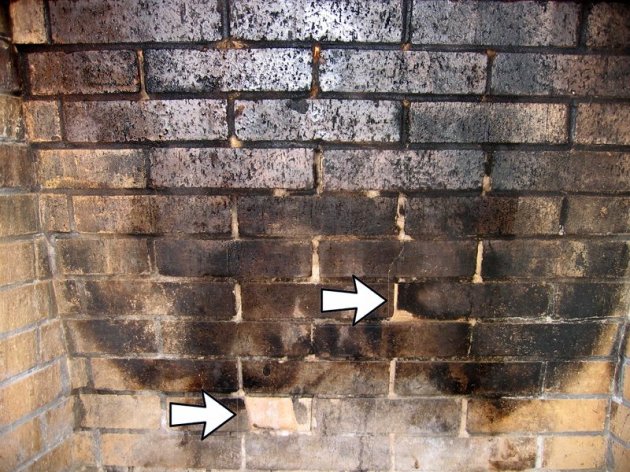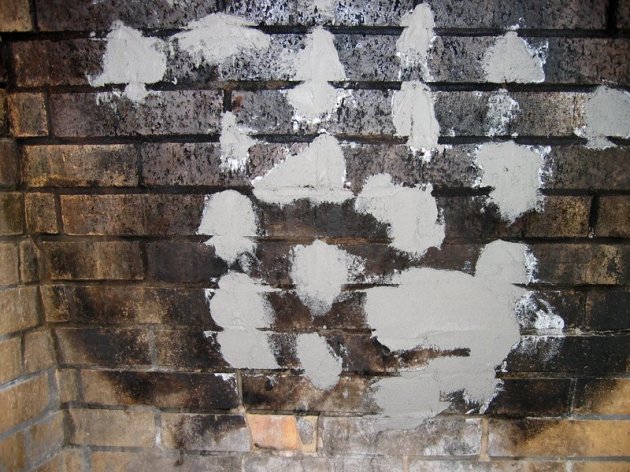I don’t like doing masonry work or cement jobs. I’m not confident I’ll get them right, and it doesn’t help that my mistakes literally turn to stone. So when Nimue asked if I thought the cracks in the bricks and mortar joints in our fireplace were a problem we should remedy, I mumbled that they didn’t look that bad. She caught the whiff of ambiguity in my answer, though, and did some research. When she goes off to do that and returns with her tablet in hand, I know I’m in trouble. “Faults in a firebox can lead to fires,” she said. Okay, okay, I muttered, we’ll fix it. “Show me what to do,” she said brightly, “and I’ll help.”
So I issued her a brick hammer, an engineer’s hammer, chisels, and safety goggles and told her to bang away at anything loose till it wasn’t anymore.
I hoped just a few chunks of mortar would come out. Instead, two bricks were cracked enough to break, and in my worst imaginings of what might follow, sparks flew and a brimstone smell filled the house as I sawed them out with a grinder. But then my research suggested that, since the gaps weren’t deep, refractory cement was up to the challenge of patching them. It’s the recommended product for both original and repair work in fireboxes, since it can take heat up to 2000°F.
Nevertheless, I put off doing my part for days … which turned to weeks … but finally found resignation by reminding myself that the worst possible outcome was I’d have to hire a pro to unmake my mess. So I measured out four parts of mix to one of water, stirred and added drops till it turned to a thick batter, got down on my knees, and crawled into the firebox.
Any resemblance to a state of prayer ended then. I wanted mortar in the joints, not on the bricks, but it didn’t work like that.
I found I could wipe off the extra with a water-filled sponge, though.
The mortar left a haze behind, but that happens to the pros, too. They let the job cure for a few days and then clean it off with muriatic acid. We’ll try white vinegar before we escalate.
I missed two small depressions, so later today will mix another small batch of refractory cement and fill them in. I’m grateful I don’t feel any resistance to doing so. I don’t want to embark on a new career of it, but I’ve shed my fear of tuckpointing. And our project list is lighter by one.
shedding style: demolish, repair
Comments welcome … what self-talk helps you get past fears that have you stuck?



Looks good to me!
Thanks! I’m satisfied, too.
Well, it looks like I have a project to take on. We have two cracked bricks, but it looked fairly superficial to me. Maybe I can follow your lead on this one!
The refractory cement is “Heat Stop II.” I’d give it five stars. I wish I could just give you what I have left; it’s probably enough for another firebox or two. (I’ll be on the other side of the ridge over Thanksgiving .)
I’ve learned that I should have picked up mortar with a regular (large) trowel, held it as if it were a table next to the joint, and pushed the mortar off into the joint with a jointing (small) trowel. I’d have wasted less on the face of the bricks.